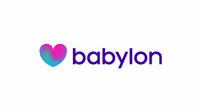Burnout: how to keep your employees from cracking

The Maslach Burnout Inventory (or MBI) is the one you've probably heard of before.
The MBI is the original tool used to measure employee burnout, created in 1981 by American social psychologist Christina Maslach and Susan Jackson, now a professor of human resource management at Rutgers.
Maslach and Jackson defined burnout as having high negative scores in three key dimensions: exhaustion, cynicism, and professional inefficacy (or a reduction in work performance). In the late '90s, they extended their research to propose that the opposite pattern, high positive scores on these three dimensions, defines engagement.
But there may be more to the story…
The Utrecht Work Engagement Scale (or UWES) was created in 2002 by professor of work and organisational psychology, Wilmar Schaufeli and his team of colleagues at Utrecht University. This model differs in one important way.
The UWES model defines engagement as a persistent, positive motivational state of mind, also characterised by three dimensions: vigour, dedication, and absorption.
Though vigour and dedication can be seen as opposites to the first two burnout dimensions (exhaustion and cynicism), professional inefficacy isn't a direct opposite to absorption, as burned-out employees are still very much absorbed in their work.
Still with me? The MBI model argues work engagement is a direct opposite of burnout, while the UWES says it's independent of burnout.
Employee burnout: Is engagement the cure?
Here's the concluding line from the latest research editorial by team Maslach, published in June 2017:
"...further progress in this arena may not come from assessing the presence or absence of a specific state, but from considering a range of possible psychological connections with work that encompass all of the core dimensions of vigour, exhaustion, dedication, cynicism, efficacy, and absorption."
Final takeaway? Engagement alone isn't enough to cure burnout
Occupational burnout is a much deeper issue than originally thought, and while there's no magic pill for curing a burned-out employee, there are some clear steps you can take to help them recover, and build greater resilience at work.
Lead by example
Burnout is contagious, but so is wellbeing.
A recent Gallup report surveyed 105 teams over six three-month periods and found that team members who felt good at work were 20% more likely to have other team members who were also thriving.
Unfortunately, most organisations are quick to dismiss burnout as an isolated incident—one individual who's just "snowed under". But it's more effective (and more productive) to openly acknowledge burnout as a natural part of life and business.
Show your teams how to get through it by way of example.
- Take a day off for mental health during your busiest time of year
- Organise a healthy team lunch outing (no shop talk allowed)
- Get outside for a "walk and talk" meeting
- Let teams switch off a few minutes early to minimise the stress of context switching
When you show your people you're not afraid to come up for air, they won't be either.
Acknowledge the cries for help
Martin E.P. Seligman is known as the father of positive psychology. In his book Learned Optimism: How to Change Your Mind and Your Life, Seligman identifies a person's "explanatory style"—the way a person talks to themself in their head—as one of the biggest factors in determining whether that person is a pessimist or optimist.
"While you can't control your experiences, you can control your explanations,” says Seligman.
So while employees suffering burnout are literally exhausted, ruminating on that exhaustion only makes the situation worse.
Train team leaders to acknowledge the following statements as a cry for help:
"I'm so overwhelmed."
"I've had it!"
"I can't get anything right."
Asking a question is a great way to interrupt someone's internal explanations and figure out how you can best support them—a simple "How can I help?" is the perfect place to start.
Make happiness a habit
According to organisational stress management expert Dr Paul Koeck, employees who fail to manage stress effectively make four big mistakes:
#1 - They don't make a firm decision to manage their stress
#2 - They don't develop a system for coping with stress
#3 - They don’t have the right information and knowledge
#4 - They don't make stress management a daily practice
Sad as it is, most of us must hit rock bottom before we seek help. And even then, we'll probably only see a physician or therapist once, then dive right back into the same conditions that led us to our breaking point.
But with 96% of senior leaders feeling burned out at work, this problem deserves our full attention. And if the "great engagement debate" tells us anything, it's that this issue must be addressed on a deeper, more personalised level.
This article was provided by Babylon Health.
Supplied by REBA Associate Member, babylon
babylon is the UK's leading digital healthcare company.







